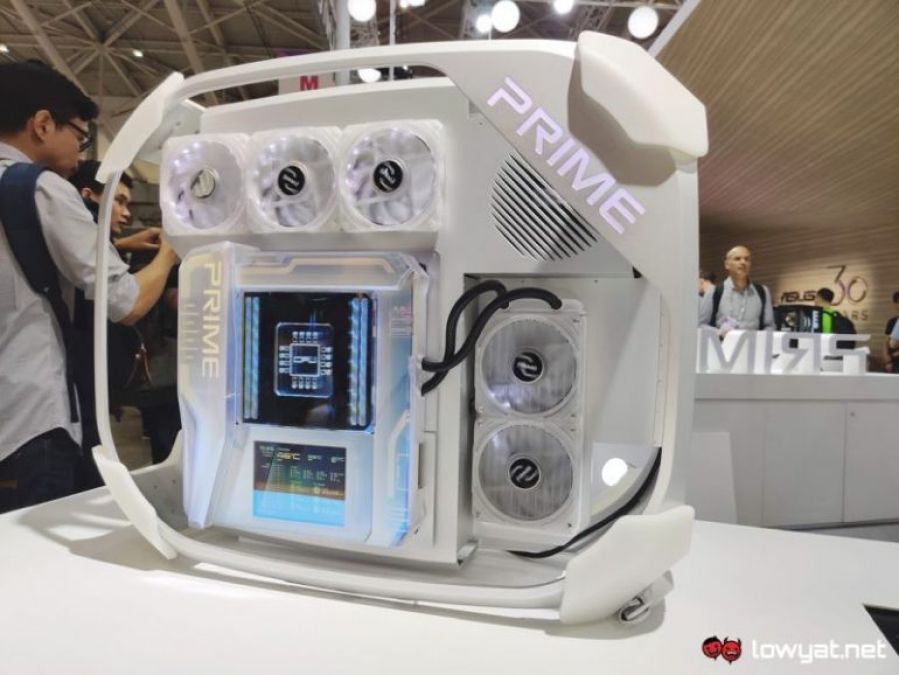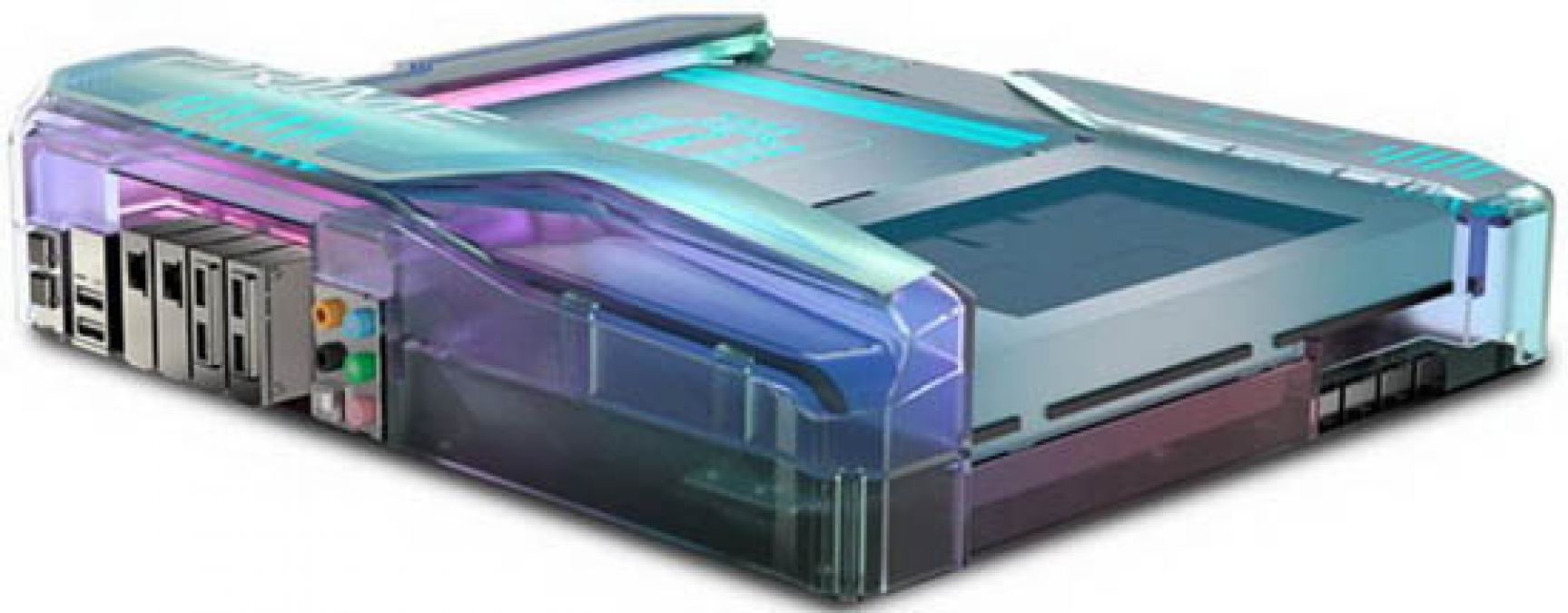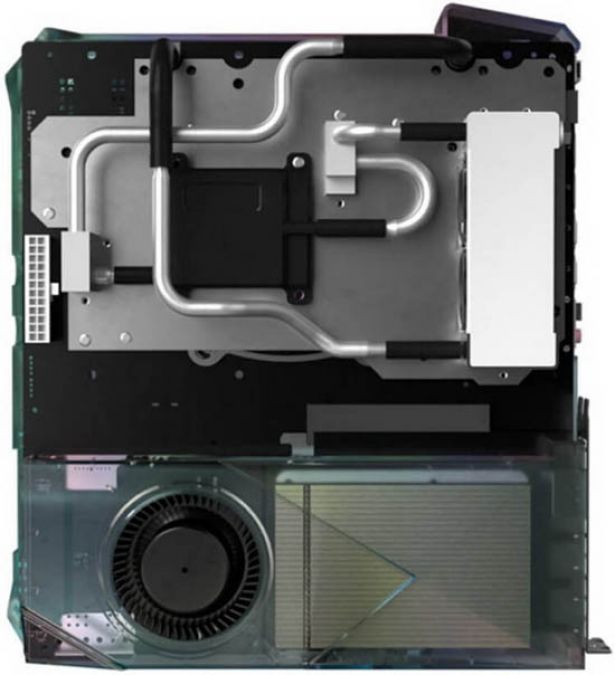
ASUS is celebrating its 30th anniversary this year. And since it began its way in 1989 as a manufacturer of motherboards, ASUS decided to bring and show at Computex-2019, which is currently taking place in Taipei, a motherboard concept that embodies the ideas of moving away from the standard ATX format that has become dominant on The home computer market since its announcement by Intel in 1995. In fact, we have before us the imagination of ASUS engineers on how motherboards of the future might look. It is called Prime Utopia.
In the new format of the motherboard, ASUS has tried to make all its components be distributed more efficiently in comparison with the standard models that are used now. So, for example, PCIe slots "moved" to the back side of the board, which essentially frees up space on the front side. Thus, the heat from the video card no longer heats the near-socket space and the VRM area and significantly improves the air flow in the front. The vacant space is occupied by four slots M.2, each of which has its own radiator for effective cooling of NVMe

For the removal of heat from the CPU and the elements of the power supply system (VRM) meets the built-in motherboard liquid cooling system. Its components - the pump, pipes, and radiator - are placed on the back side. In addition, ASUS has developed a proprietary Hydra Cortex fan connector that supports up to three propellers from one connection and allows you to control the speed of each fan, as well as the backlight independently of the others.
Another interesting feature of the concept is the modular rear I / O panel. Each element in it can be removed and replaced, allowing the user to configure the ports as he likes. In addition, each modular unit is connected via the PCI Express bus and is completely autonomous.

The front side of ASUS Prime Utopia is completely covered with decorative covers and contains a 7-inch color OLED-touchscreen display. It can be connected directly to the board itself or, as the company points out, can be used as a tablet screen, setting it on the table and communicating via Wi-Fi. Of course, you can display various system parameters on the screen and use it to control them, for example, by changing the fan speed or turn on / off the computer with one touch.
On Computex, the ASUS board demonstrates a Prime Utopia board in an open case with completely white components and the minimally visible wiring.
When will standard motherboards become obsolete?
Practically nothing that Prime Utopia offers is impossible to realize at the expense of modern motherboards of the standard ATX format, which has hardly changed for more than two decades. ASUS is not the only company that has decided to offer an alternative to ATX. Even Intel itself tried to convince people to deviate from this standard. However, this would deal a serious blow to the compatibility of the components used and, on the whole, would break the already established ecosystem, so this is unlikely to happen in the near future.